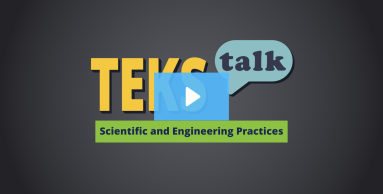
Knowledge and Skills Statement
The further explanation is designed to be a resource for educators that helps them better understand the topic their students are learning. Further explanations may be written at a more complex level than would be expected for students at the grade level.
A typical structure for a discussion is Claim-Evidence-Reasoning (CER). A claim is an answer to a scientific question stated as a fact. Students gather evidence to support their claims. The evidence should justify the accuracy of the claim and include data points, scientific observations, or a summary of data. Multiple sources should support the evidence. The reasoning connects the claim and the evidence logically. It should also explain why the claim is reasonable based on scientific ideas and principles.
Scientists develop and defend their explanations in collaborative discussions with peers (other scientists and engineers) using evidence based on a preponderance of data. Engineers collaborate with their peers through the design process, giving and receiving feedback on their designs, and justifying their own solutions using the design criteria and evidence.
Research
Huff, Kenneth L., and Rodger W. Bybee. “The Practice of Critical Discourse in Science Classrooms." Science Scope 36, no. 9 (2013): 29–34. https://www.proquest.com/docview/1412868121?sourcetype=Scholarly%20Journals.
Summary: "The Practice of Critical Discourse in Science Classrooms" outlines the purpose and value of conversation, critical discourse, and argumentation in the science classroom. Not only should discourse be used as an exchange of ideas, it also provides opportunity for reflection on and refinement of ideas, and further allows for justification supported by evidence.
